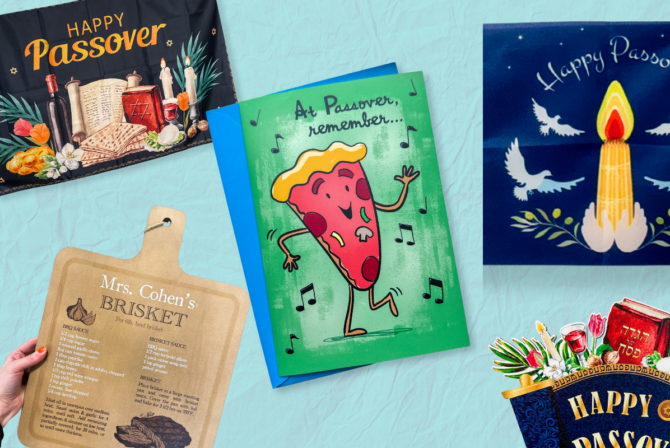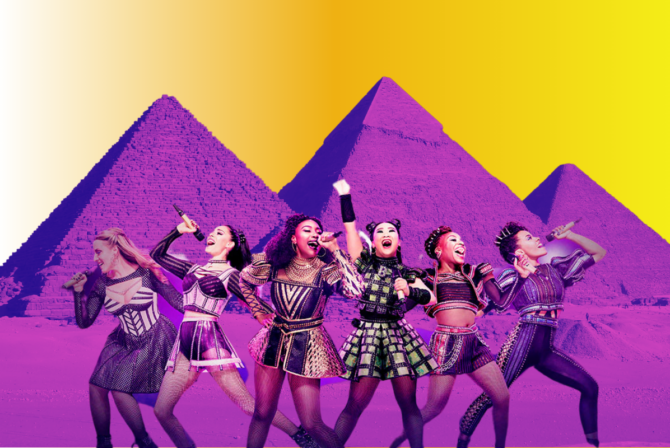As my teenage daughter was crocheting one evening, I sat on her bed. As we chatted, I mentioned offhand that I don’t measure the flour for my challahs.
She curled herself over the perfect rows in her lap. “What?!!” she exploded at me. “The challah you make all the time, that everyone loves, that’s famous with all of our friends? The best challah in the world, and you don’t have a recipe?”
I explained that I do have a recipe, and that I follow the instructions, mostly, but the amount of flour is a matter of knowing how good dough looks and feels. “I know how much flour is enough,” I told her.
“How?!” she insisted. “How do you know?”
I thought about all the ways in which she had asked me that; the constant questions since she was old enough to talk. How did I know how to drive? How did I know how to cut with a sharp knife? How did I know that the trees will get flowers again in the spring?
I began answering her in the best way she knew: I told her it was in a book. Whenever she asked how I knew something, I told her it was in the Momma Book. The Momma Book was something given to all mommas when their babies are born, I explained, and it includes everything they need to know to take care of their baby: the baby’s favorite things, the right way to snuggle the baby, and all the answers to all the questions their baby might ask. It had everything I needed, which was why I always knew.
“Can I see it?” she asked me.
No, I told her. It’s only for Mommas. You’ll get one when you become a Momma.
Though it was an improvisation, I thought perhaps I would write the Momma Book for her, and give it to her when she had a baby. It wouldn’t give her everything she needed to know, of course, but maybe it would be a sweet chronicle of her own childhood and my young motherhood, a time when I was desperate for a manual for the one job that could never come with one.
The book I began writing consisted of letters, stilted things describing her first years: the people in them, the things she loved, the ways she played; the way I felt and how I struggled, the love I felt and the things I hated. I kept it up for years – six or seven, maybe – and eventually ran out of steam.
The truth was that, as a new parent, I did what most other new parents do, the clichéd dance of mistakes and backward steps. I dressed my baby in onesies only to realize later that the rooms were cold and air conditioned; let her keep the bandage from her vaccine on her arm for days because she loved it and then finally pulled it off to find the skin underneath festering and irritated; waited for her to complain about too-tight shoes until she had grown three sizes.
I also learned her favorite songs and the way she would close her eyes if I ran one finger between her eyebrows; embraced her hatred of grass beneath her feet and always brought a blanket to the park; tied the tight bottle curl at her temple into a ponytail holder so she could hold it between her fingers when she sucked her thumb.
She was 5 when I began making challah. My brother was getting married, and I was hosting a Friday night dinner, and it felt wrong to buy a challah. I begged a recipe from a friend and began making my own. I made those early challahs meticulously and followed the recipe exactly. Those first loaves, like the first parenting decisions, were by the book. First baby cereal, then vegetables, then fruit; ten cups of flour, plus one for dusting the surface.
As time went on – and as my second daughter taught me that rules were made for breaking – the entries in my Momma Book became both less formal and less timely, and my challah got more improvisational. Also, there was my second child’s violent digestive response to all grains, so there were changes and adjustments we had to make to the larger plan – out of necessity, fruit came earlier, and her constant hospital stays brought TV into her life far earlier, too.
Through it all, my older girl stood by and watched how things were done. In the years when I measured the flour and timed the multiple dough risings, she waited nearby for the opportunity to work out her frustrations on the yeasty mound. Pounding and thrashing it, she squealed and jumped from the stool into the air to lend more gravity to her hands as they landed.
“Feed it more flour!” she’d yell as the dough became sticky under her fingers.
When she and her sister were older and both at school, I began making challah in the early afternoon on Fridays. The smell of yeast met them at the door, and they’d both yell “challah!” as they dropped their backpacks on the kitchen floor. Challah had become part of the rhythm of my week and of my parenting, giving my children a subtle vocabulary for what Friday afternoon would mean, and what love was being left to grow in a warm space while they were at school.
By then, I had stopped measuring the flour altogether. I knew the dough – when it would make a gummy loaf or fail to cook through; when it wouldn’t come together and when it would. I knew it didn’t really need two risings – turns out one made for a softer, chewier loaf – and I knew that a full flour canister would leave me with flour to spare.
I also know now when my oldest daughter needs a hug, and when she is sitting silently in an invisibly prickly outer shell. I can see when she takes quick, fast gulps of water that she is trying not to cry.
Days after she discovered that I don’t measure the flour, she remained incredulous and a little frustrated. There is, I think, a part of my growing-up girl who knows that, someday, she will also make this challah. And now she’s learning that it’s not like a crochet pattern — something to follow exactly. She’ll learn by doing and by feeling, and eventually, in her time, she’ll just know.







